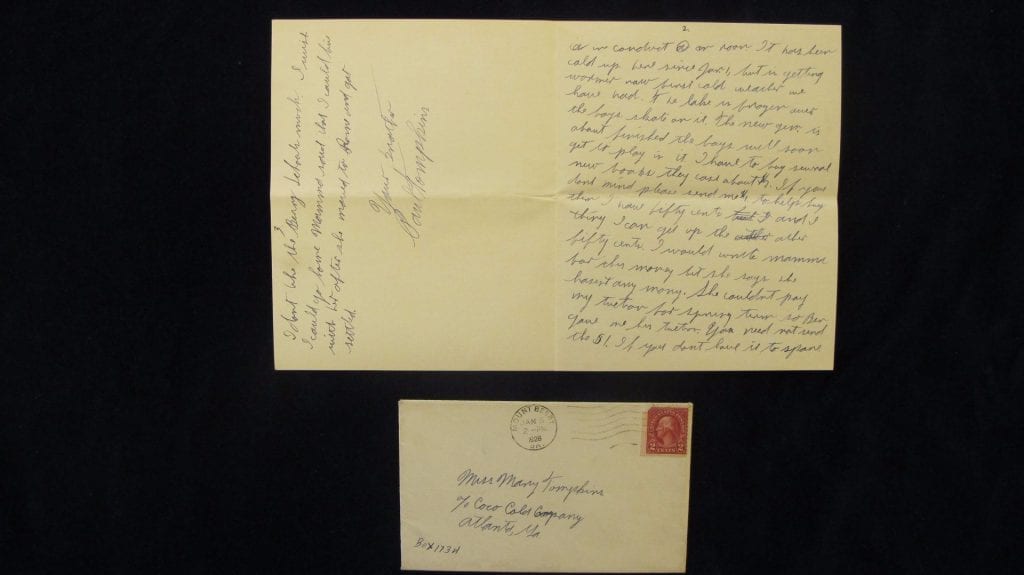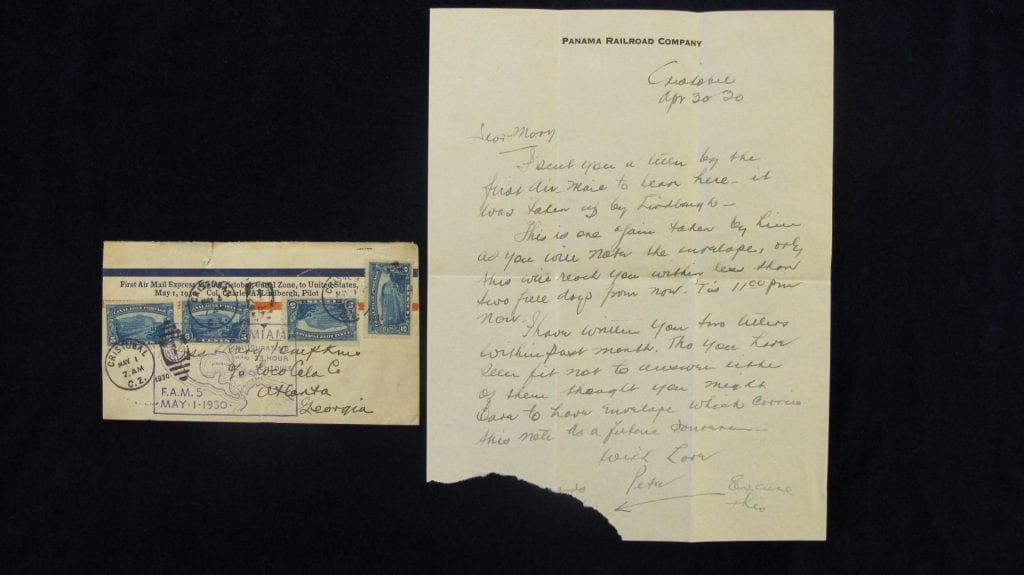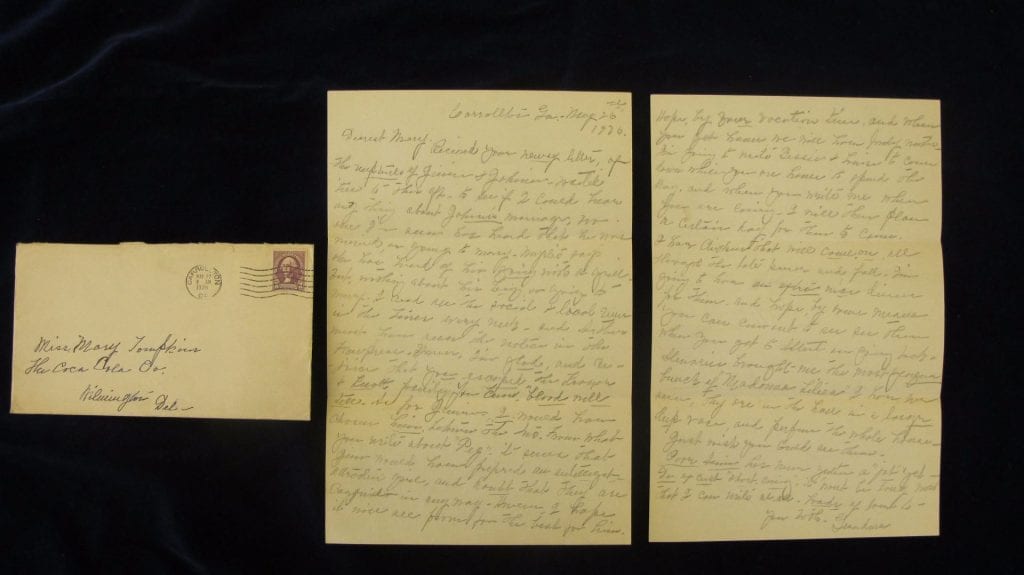Letters to Coca-Cola: Mary Tompkins Correspondence, 1918-1937
Lehigh’s University Libraries Special Collections contains a collection of diverse information. One recent example is the Mary Tompkins Correspondence, which reflects a variety of research topics including: social commentary, business, genealogy, and transportation. This collection features letters written to Mary Frances Reid Tompkins (1908-2004) in the years between the World Wars by three generations of family members (1918-1937). The letters from the Great Depression era are especially poignant in the family’s repeated requests to Mary Tompkins for financial aid. These letters also provide a rich source of information about how a formerly aristocratic Southern family coped with the devastation of their wealth and societal standing resulting from the Civil War. Apparently, Mary Tompkins was one of the few people in her family with a secure and steady job, which was at the Coca-Cola Company in Atlanta, Georgia. Coca-Cola was one of the very few American businesses that thrived during the Great Depression. In an era when most companies cut back on advertising, Coca-Cola ramped theirs up. In the early 1920s, Prohibition shut down bars that served beer and liquor. In response, Coca-Cola came up with the slogan “The Pause That Refreshes” as a popular marketing campaign which associated drinking Coke as a part of the American way of life, promoting its consumption as a popular way for people to be sociable. To further promote its product, Coca-Cola maintained the 5 cent price per bottle for 50 years, from 1909 to 1959, and developed the innovative six-pack cardboard carrier, which promoted buying multiple 5 cent bottles. (http://www.coca-colacompany.com/history)

Many of the letters also had their envelopes included, which offered clues to Mary’s consistent address at Coco-Cola in Atlanta rather than a frequently changing residence. Mary was very popular, having many friends and interests. The letters requesting aid were sure to reach her at her business address.
A large portion of the letters requested financial aid, some letters from her grandmother, Mary Frances Reid Reese of Carrollton, Georgia, outlined the family’s former wealth and prominent Southern roots. This included the family’s relation to the Sallie Fannie Reid Guards Confederacy army unit, Governor of Georgia John M. Slaton (1866-1955), and Atlanta architect J. Neel Reid, who owned the well-known Antebellum house Mimosa Hall.
Among the envelopes is an unusual one: a commemorative issue from the Canal Zone noting the First Air Mail Express Flight.

The envelope is postmarked May 1, 1930 7 A.M. Cristobal, C.Z. F.A.M. 5, and was sent from Peter W. Reese, an electrician for the Panama Railroad, who was a relative inviting Mary to visit him in Panama. The F.A.M.-5 was a U.S. Post Office (Foreign Air Mail) designated contract airmail route flown by Pan American Airways that inaugurated the route from Miami, Florida to Central America. When combined with F.A.M.-6, this route would become known as the :Lindbergh Circle,” with flights circumnavigating the Caribbean. (see The Cornell Daily Sun, v. XLIX, n. 92, 7 Feb. 1929)

In July 1934, Mary moved from Coca-Cola’s Atlanta headquarters to the bottling plant office in Wilmington, Delaware. In the move, Mary met Lowry S. Danser (1912-2007) who worked for E.I. DuPont de Nemours and Co. as a chemical engineer. Lowry S. Danser earned a degree in chemical engineering from Lehigh in 1933, where he was involved with the Delta Tau Delta Fraternity and the swim team. Mary and Lowry would eventually marry in 1939. Lowry Danser went on to have a successful career with DuPont, holding a U.S. patent for copper removal from chloroprene. He and Mary lived abroad during numerous assignments for the company, including three years in Japan where they began collecting oriental art. Lowry and Mary, were generous benefactors of Lehigh, gifting artwork and pottery to the University’s Art Gallery. They were members of the Asa Packer Society and the Tower Society. In 2004, Mr. Danser established the Mary T. and Lowry S. Danser ’33 Gift Annuity. On his death in 2007, the Danser estate gift to the University established the Mary T. and Lowry S. Danser Distinguished Faculty Chair in Chemistry. They are buried in the Carrollton (Georgia) City Cemetery, the city postmark featured on many of the envelopes. In death Mary Frances Tompkins Danser returned to her Southern roots.